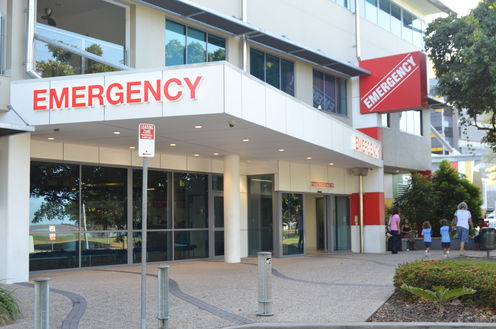
In his 2013 election campaign, Tony Abbott promised his government would build a world-class “five pillar economy”, encompassing manufacturing, agriculture, services, education and mining. On the eve of his government’s second budget, Michael Woods argues that health should have been one of those pillars.
Australia’s health system is both important and big: as a proportion of the economy, as an employer and as a cost to taxpayers. It’s big business, and it’s only going to get bigger, so governments need to play close attention to creating a sustainable health system.
The country spent A$147 billion on health in 2012-13, which is just under 10% of the country’s Gross Domestic Product (GDP). Only a decade ago, this figure was much lower at 8.6% of GDP.
Countries such as the United Kingdom and Norway spend a similar proportion of their GDP on health, and Canada and France spend a little more. The United States is in a class of its own, at 16.9% of GDP. In 2002, the OECD median in health spending was 8.2%, and it had grown to 9.2% a decade later.
A large chunk
The health workforce is large and diverse. In Australia, approximately 600,000 workers are registered as health practitioners, of whom more than half are nurses and midwives. Added to that are many more who provide support services. In fact, health care and social assistance is now one of the top three employers in the economy, along with retail and construction.
But the health workforce needs reforming. High-cost professionals are performing procedures that could be safely undertaken by other health workers. The demand for nurses is outstripping the supply of those skilled and willing to work in the health sector. And the shortage of many health services in rural and remote Australia is an ongoing concern.

Somewhat ironically, the agency that led research and funding into workforce reform, Health Workforce Australia – was itself a victim of the 2014-15 federal budget.
The health system is also at the heart of some of the country’s strongest fiscal pressures. Of the A$147 billion spent on health in 2012–13, more than two thirds was funded by federal and state taxpayers.
The federal government spends over 40%, with the big ticket items being the Medicare Benefits Schedule, the Pharmaceutical Benefits Scheme and payments to the states (and territories). It’s not surprising then that these items are in its sights come budget time.
The states spend a further quarter of the total, mainly to meet the costs of their public hospitals. And, of the rest, households directly spend nearly 20%, and indirectly meet another 8% through health insurance premiums.
Growing share
The health system will continue to grow. Government expenditure in 2011-12 accounted for 6.5% of GDP but by 2059-60, this is expected to rise strongly to 10.8%.
With incomes rising and expectations increasing, people want more timely access to high quality health care. New technologies, pharmaceuticals, diagnostics and treatments are contributing to that growing demand.
But some moderating forces are at play across many OECD countries, including Australia, due to the purchasing policies of governments and the more rapid availability of lower cost generic drugs. Still, health care is labour intensive, and wage growth will add further to cost pressures.

A more complex driver of growth is population ageing. As the latest Intergenerational Report notes, for both pharmaceutical benefits and public hospitals expenditure, spending on people aged 85 years and older is over four times the per person average for the whole community.
Many older people have chronic health conditions that require long-term collaborative health care, and yet many are living healthy and active lives in the community before succumbing to frailty and expensive interventions. The interplay of these forces on costs and the workforce are yet to be fully understood.
Making the right changes
There is some good news: the expected average lifespan of those born in 2012 places Australia in the top seven among OECD countries. The health system, together with education, employment, housing, nutrition and other factors, all play a part in this.
The not-so-good good news is that 63% of the population is overweight or obese, up from 57% in 1995. The health status of those in rural and remote areas is lower, and as the Prime Minister has reported, closing the gap in life expectancy for Australia’s Indigenous population within a generation is not on track.
We clearly need to ensure the health system is sustainable. And it won’t be enough if this budget produces yet another series of disconnected expenditure cuts and revenue raising measures. All governments, collectively through COAG, need to engage the health sector and the whole community in a serious policy dialogue.
The most important questions are: how do we reduce demand on our health system? That is, how can we rebalance our focus toward wellness, prevention and primary care? Second, how do we make the current system more efficient? And third, when and how do we efficiently expand expenditure on the system, while making sure it will be sustainable for future generations?
Michael Woods is a consultant to the OECD Southeast Asia Regional Programme.
